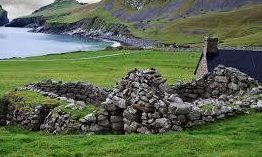The main conservation charity in Scotland has announced changes to its methods of preserving the country’s heritage.
The National Trust for Scotland plans to boost visitors’ experiences at its properties with the aim of increasing numbers at its sites.
The organisation has also confirmed that running costs will be reduced by 10% with the savings going towards conservation projects.
The trust has more than 330,000 members and runs 129 heritage properties, including the fabled St Kilda in the Western Isles and Robert Smail’s Printing Works in Innerleithen.
The number of staff is likely to be reduced but this will not affect people working at its properties.
The moves follow a review of the 85-year-old charity, led by chairman Sir Moir Lockhead and chief executive Simon Skinner.
The former. “This is an exciting new chapter in our history, providing new opportunities.
“Hard work has turned around the Trust’s fortunes in the last few years, but we are now ready to move up to the next level to ensure we fulfil our mission of conservation in ways that are more relevant to today’s Scotland.
“The National Trust for Scotland is overflowing with fantastic stories of Scotland’s past, people, places and passions.
“We want to share
these with the many, not the few, attracting new visitors, supporters, advocates and fans.
“These proposals have the potential to transform the Trust and help us establish heritage as a cause that communities all over the country can embrace, now and for years to come.”
Mr Skinner added: “I’ve felt strongly that there needed to be a rebalance of activity within the Trust, giving much more control and influence directly to our properties.
“After all, it’s because of those special places that the charity exists, that it gets the support of over 330,000 members and attracts millions of visitors every year, and they are at the heart of our proposals.”
